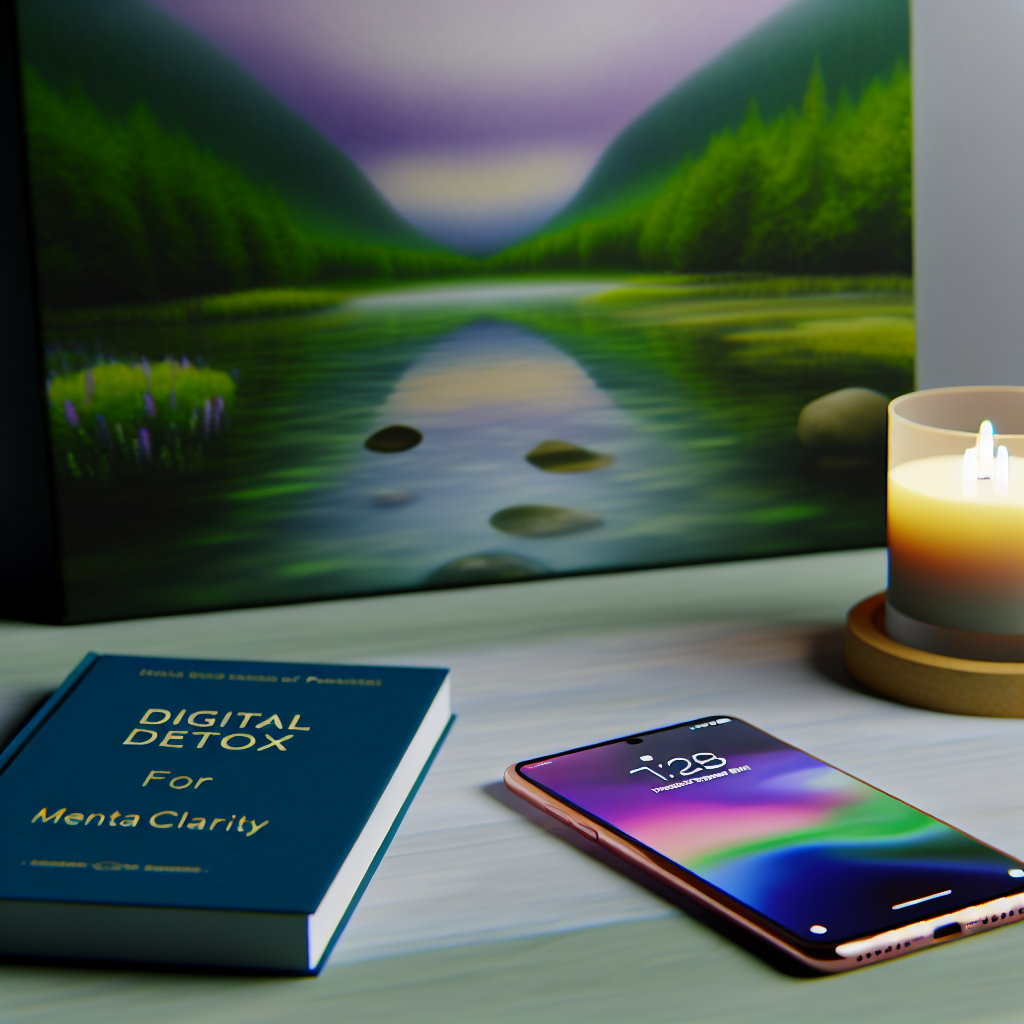Digital Detox Strategies for Mental Clarity
MensHealth911.com
Introduction
In today’s hyperconnected society, the average American spends over 7 hours per day staring at screens—smartphones, computers, tablets, or TVs. For men of all ages—from teens gaming online to seniors reading news on tablets—digital devices play a critical role in our routines. Yet, this increased exposure is raising red flags regarding mental clarity, emotional wellness, and physical health.
Digital fatigue is now a recognized issue, marked by short attention spans, “brain fog,” irritability, disrupted sleep, and reduced productivity. Constant connectedness—particularly through social media—has been linked to elevated stress, anxiety, and symptoms of depression. Scientific findings suggest that chronic screen exposure disrupts brain activity, impairs decision-making, and weakens focus and memory.
Digital overload affects men differently across age groups. Teen males often face risks like gaming addiction and cyberbullying. Young adults experience social and work-related burnout. Middle-aged men juggle demanding careers and family life, often creating psychological stress due to screen dependence. Older men risk cognitive decline and mental isolation from over-reliance on digital devices.
A digital detox—the conscious act of limiting screen time—can reduce these adverse effects. Setting tech-free zones, taking regular breaks, or turning to mindfulness techniques can help recalibrate your brain. Backed by emerging neuroscience and psychology research, the strategies outlined in this article are tailored to be adaptable at any life stage—from teenage years to older adulthood.
Science-Backed Benefits of Digital Detox
Multiple clinical studies reveal the connection between reduced screen time and improved mental health. A hallmark study by the University of Pennsylvania discovered that limiting social media use to just 30 minutes daily significantly improved mood and reduced feelings of loneliness and depressive symptoms, especially among young adults (Hunt et al., 2018).
Another compelling study in the journal Behavioral Sciences (2021) linked digital multitasking (e.g., scrolling through news feeds while checking messages) to elevated levels of cortisol—a stress hormone known for lowering cognitive performance. Even modest reductions in screen exposure resulted in improved emotional regulation and brain function.
Teens face heightened vulnerability. Research in JAMA Pediatrics (2019) concluded that increased screen time in adolescents—especially teen boys—correlates with higher risks of ADHD, anxiety, and social disengagement (Boers et al., 2019). Disruption of sleep patterns, poor emotional regulation, and decreased real-life social interactions were all noted.
Encouragingly, reversing these effects is possible. A University of California, Irvine study observed that participants who took short digital breaks throughout the day enjoyed reduced stress levels, sharper problem-solving skills, and increased workplace satisfaction. They also reported fewer headaches, less eye strain, and better concentration—even after brief digital pauses.
For older men, screen overuse can pose memory retention and isolation risks, both of which are contributors to cognitive decline and diseases like dementia. The Alzheimer’s Association recommends non-digital activities, such as physical movement and in-person socializing, to support long-term brain health and emotional well-being.
Effective Digital Detox Strategies for Men
Digital detox doesn’t require drastic measures. Rather, it is rooted in implementing small, sustainable habits. Here are science-supported and age-adaptable techniques:
1. Set Tech-Free Zones and Times
Create digital-free environments in your home—like bedrooms or dining areas. Disconnecting from screens at least an hour before bedtime can enhance sleep quality, reduce overstimulation, and support melatonin production for deeper rest.
2. Use Digital Well-being Apps
Paradoxically, technology can also help you detox. Install apps like Forest, Moment, Digital Wellbeing (Android), or Screen Time (iOS) to set screen-time limits, track habits, and introduce intentional tech usage goals.
3. Adopt the 20-20-20 Rule
To combat eye strain and mental fatigue, apply this simple rule: every 20 minutes, look at something 20 feet away for 20 seconds. This resets visual focus and counters the draining effects of close-range screen use.
4. Schedule Social Media “Fast Days”
Plan one or two days each week to completely unplug from social networks. Replace that time with offline journaling, sports, family activities, cooking, or engaging in a new hobby to refocus mental energy.
5. Prioritize Physical Activity
Physical exercise is one of the best natural antidotes to tech overload. Regular movement—whether it’s walking, cycling, or resistance training—reduces cortisol (the stress hormone), elevates endorphins, and provides a healthy alternative to passive screen time.
6. Practice Mindfulness and Deep Breathing
Digital stimulation can disrupt your parasympathetic nervous system, leaving your mind racing. Engage in daily mindfulness or deep breathing for 10–15 minutes to reset your thoughts and emotions. This is especially useful during work breaks or before sleeping.
7. Plan a 24-Hour Digital Sabbath
Once a month, dedicate an entire day to being offline. During this time, engage in nature walks, creative pursuits, in-person conversations, or reading physical books. A digital Sabbath allows for emotional detox and a renewed worldview.
Conclusion
While digital technology enhances convenience and connection, the mental and emotional costs of nonstop device use are becoming increasingly evident. For men of all life stages, a structured digital detox can renew clarity, sharpen focus, and restore emotional equilibrium.
Whether you’re a teenager facing the distractions of apps and gaming, a mid-life professional managing work-life boundaries, or a senior aiming to protect cognitive vitality, detoxing from screens offers a realistic path toward better mental health. The key is timing, moderation, and purpose. In a world of constant notifications, reclaiming uninterrupted moments might just be the boldest move toward inner peace.
Remember: to truly recharge, sometimes logging off is just what your brain needs most.
Concise Summary
In an age of nonstop connectivity, men of all ages face digital overload, impacting focus, mental health, and overall well-being. This guide explains the neurological effects of screen overuse and presents science-backed digital detox strategies—like tech-free zones, mindfulness, physical activity, and scheduled offline days—to promote mental clarity and cognitive resilience. Whether teen or senior, incorporating these detox techniques offers lasting benefits, including better sleep, lower stress, and revitalized emotional stability.
References
- Hunt, M. G. et al., 2018 – Journal of Social and Clinical Psychology
- Becker, M. W. et al., 2021 – Behavioral Sciences
- Boers, E. et al., 2019 – JAMA Pediatrics
- Mark, G. et al., 2014 – University of California, Irvine Study
- Alzheimer’s Association – 10 Ways to Love Your Brain

Dominic E. is a passionate filmmaker navigating the exciting intersection of art and science. By day, he delves into the complexities of the human body as a full-time medical writer, meticulously translating intricate medical concepts into accessible and engaging narratives. By night, he explores the boundless realm of cinematic storytelling, crafting narratives that evoke emotion and challenge perspectives. Film Student and Full-time Medical Writer for ContentVendor.com



